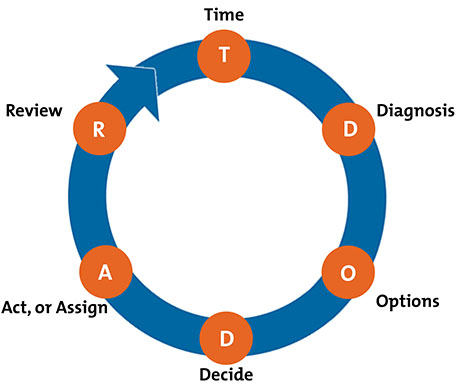The TDODAR Decision Model
Considering Your Options Under Pressure
Have you ever been pressured to make a crucial decision while the clock ticks away against you?
It's a scenario that most of us can relate to. IT systems crash hours before you're due to turn in a report. Faults get discovered with new products days before they're due to launch to market. Several team members ask for compassionate leave simultaneously, just when you need all hands on deck. Every now and then, situations like these arise, and you have to react and make a judgment call – fast.
Some people are naturally calm, clear thinkers who cope well with stressful situations. Others find that pressure "paralyzes" them or leads them into rushing decisions. It can be useful to have a structure in place that works as well in pressured situations as it does for regular, everyday decisions.
Keeping a level head is vital to making important decisions under pressure.
This article walks you through TDODAR* – a decision-making framework that can help you to make carefully considered, timely and effective decisions.
About the Tool
TDODAR is a popular decision-making tool in the aviation industry. Pilots often use its six sequential steps to help them solve problems in mid-flight. TDODAR stands for:

Figure 1. The tool contains 6 actions that follow one after another, as a "circular flow."
It's a simple and intuitive tool that you can use in any decision-making situation, whether you're flying an airplane or fixing a server bug. It's particularly useful for making well-considered decisions in emergencies and in pressured situations where there's a real element of uncertainty about what to do.
With TDODAR, you follow the steps in a structured manner to plot a way forward through the problem at hand, and this helps you to avoid panic and decision-making paralysis.
...
Access the Full Article
This article is only available in full within the Mind Tools Club.
Learn More and Join TodayAlready a Club member? Log in to finish this article.


